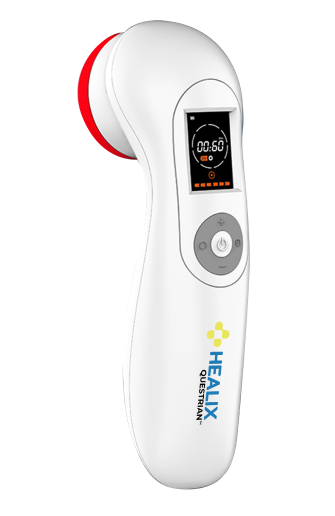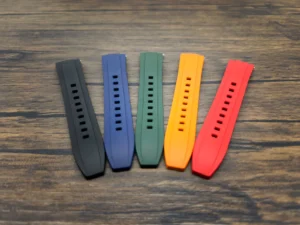Top Uses of Surgical Forceps in Medical Procedures
Surgical forceps are one of the most commonly used tools in medicine. They are specially designed to help doctors and nurses hold, grip, or move tissues and other objects during medical procedures. These instruments are used in surgeries, wound care, dental treatments, and many other healthcare settings. Some forceps are designed for general use, while others, such as Adson dressing forceps and uterine dressing forceps, are made for specific tasks. Knowing the different uses of surgical forceps helps us understand how important they are in modern healthcare.
General Purpose of Surgical Forceps
Surgical forceps serve a wide range of purposes in both routine and complex medical procedures. Their main role is to allow medical professionals to hold onto tissues, dressings, or surgical materials without using their hands directly. This helps to maintain cleanliness and prevent infection. Forceps also offer better control and precision than fingers can provide, especially in delicate procedures.
These tools are made from strong materials like stainless steel, which makes them safe, reusable, and easy to clean. The design of surgical forceps helps doctors carry out their tasks with more accuracy and less effort. Whether in an operating room or a regular clinic, surgical forceps are always close at hand.
Adson Dressing Forceps in Wound Care and Minor Surgery
Adson dressing forceps are a special type of surgical forceps designed for handling soft tissues and dressing materials. Their narrow tips and textured grip make them ideal for use in wound care and minor surgeries. Nurses and doctors often use them to remove bandages, apply new dressings, or hold tissues while cleaning a wound.
These forceps are also widely used in skin procedures, such as suturing or removing stitches. Their fine tips help hold the skin in place without causing harm or discomfort. In cosmetic and plastic surgeries, Adson dressing forceps are preferred because they provide the control needed for precise, small movements. Their lightweight build also makes them easy to handle for long periods without causing hand fatigue.
Uterine Dressing Forceps in Gynecology
Uterine dressing forceps are mainly used in gynecological procedures. These forceps are longer than most others and have a rounded or spoon-shaped tip to allow safe entry into the uterus. Doctors use these tools to insert or remove dressings, clean the uterine lining, or apply medication directly to the area.
In procedures like dilation and curettage (D&C), or after childbirth, uterine dressing forceps are essential. Their design makes it easier to reach deeper parts of the reproductive tract without causing injury. Because of their special structure, these forceps help perform delicate tasks safely and effectively in a sensitive area of the body.
Surgical Forceps in Emergency Care
In emergency rooms, time is critical. Surgical forceps allow doctors to act quickly when dealing with wounds, bleeding, or foreign objects in the body. These tools can be used to pull out glass, dirt, or metal fragments from a wound without making the injury worse. They are also used to control bleeding by clamping blood vessels before stitching or bandaging a wound.
When seconds count, forceps offer a quick and clean way to handle emergencies. For example, Adson dressing forceps are often used in emergency wound care to quickly remove damaged tissue or apply dressing. Their speed and precision make them a favorite tool in urgent medical situations.
Use in Dental and ENT Procedures
Surgical forceps also have many uses in dental and ENT (ear, nose, and throat) care. In dentistry, forceps are used to hold cotton rolls, remove decay, or help during tooth extractions. Their small size and precision make them perfect for working inside the mouth, where space is limited.
In ENT treatments, doctors use forceps to remove earwax, foreign objects, or tissue samples. These procedures often require a steady hand and a reliable tool. Surgical forceps, including Adson dressing forceps, are trusted in these fields for their reliability and grip strength.
Assisting in Biopsy and Tissue Collection
In medical tests like biopsies, where a small piece of tissue is taken for examination, surgical forceps are key tools. They help doctors hold the tissue steady or even remove it safely. This process must be done carefully to avoid damaging the sample. With the help of well-designed forceps, doctors can collect accurate samples for lab analysis.
Forceps also assist in collecting samples from sensitive areas like the cervix or uterus. Here, uterine dressing forceps are particularly useful. They allow doctors to gather tissue gently, which helps make the biopsy both effective and less painful for the patient.
Surgical Forceps in Routine Examinations
While forceps are mainly thought of as surgical tools, they are also used during routine checkups. In everyday clinical settings, doctors and nurses use them to remove dressings, inspect wounds, or help clean an area of concern. Their grip and design allow them to work quickly without touching the patient’s skin directly, keeping the process sterile and safe.
Adson dressing forceps are often used in outpatient clinics for these types of tasks. Their pointed tips and smooth control make them ideal for everyday medical needs. They are simple yet highly effective tools that help improve patient care.
Role in Sterile Procedures
Surgical forceps are also used to maintain a sterile environment in the medical field. When doctors or nurses need to move sterile instruments or place surgical sponges, they use forceps to avoid contact. This reduces the chance of contamination and infection.
In gynecological procedures, uterine dressing forceps help place sterile materials deep inside the uterus without direct hand contact. This use is especially important in preventing infections after childbirth or during other internal treatments. Forceps play a key role in ensuring that the tools and the treatment area stay clean throughout the procedure.
Conclusion
Surgical forceps are simple yet powerful tools that are used across almost every area of medicine. From delicate wound care to complex surgeries, they provide control, safety, and precision that hands alone cannot offer. Tools like Adson dressing forceps and uterine dressing forceps show how certain forceps are made for specific tasks, improving the safety and success of those procedures.
Because of their versatility, surgical forceps remain one of the most trusted instruments in healthcare. Whether in an emergency room, a dental clinic, or a gynecological office, these tools help medical professionals deliver better care. Their design, material, and usefulness make them a critical part of any medical tool kit. With proper use and care, surgical forceps will continue to support doctors and nurses in providing high-quality patient care for many years to come.
More info: Artema Medical











